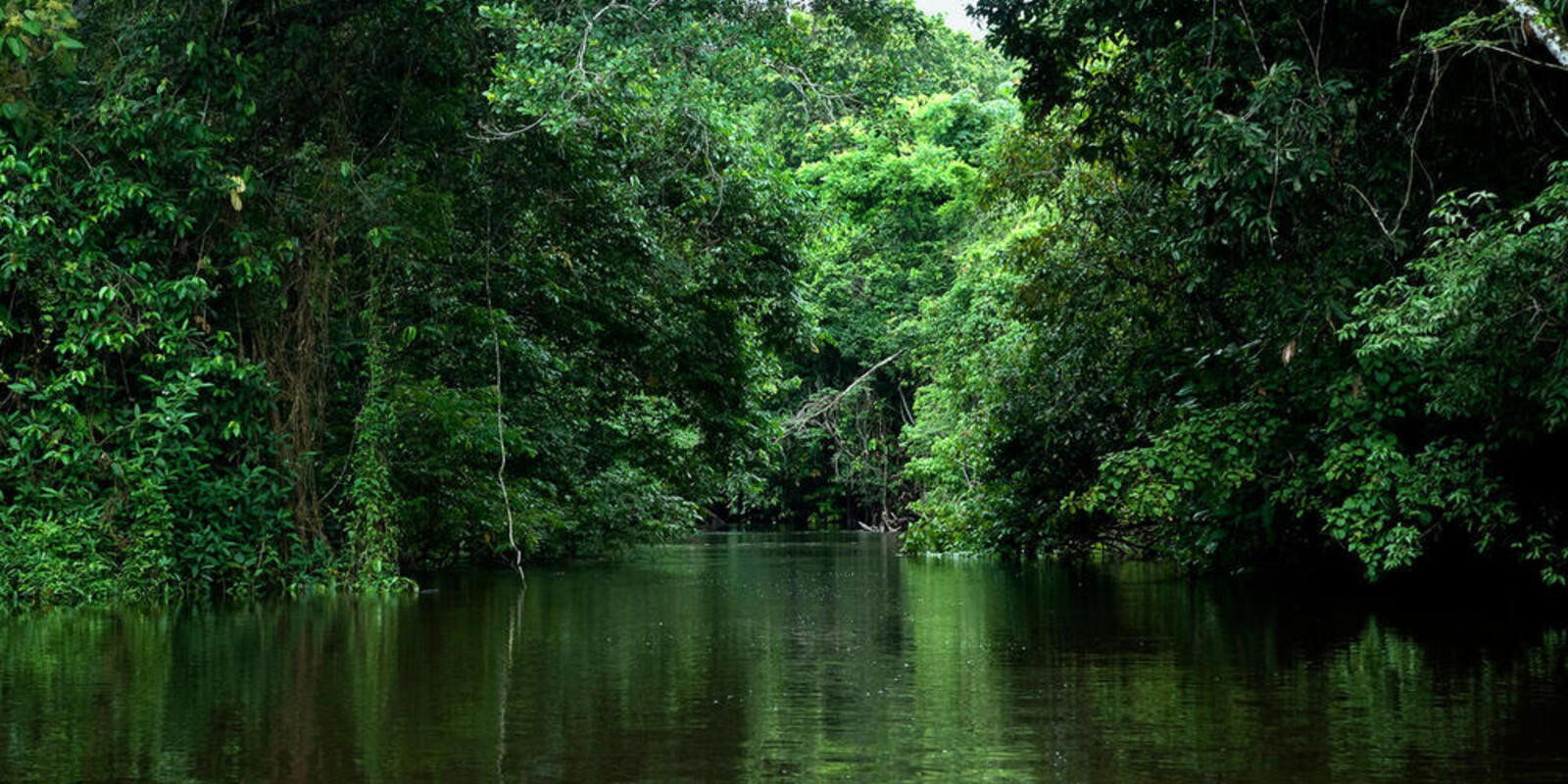[vah-shee for-est]
1. Overview
Vahshi Forest, the world’s largest expanse of dense rainforest, covers vast areas of southern and inner western Kair’Thear. Known for its exceptional biodiversity and lush environment, Vahshi is not only a natural wonder but also a realm of deep mysticism, protected by ancient deities and believed to be sentient by some.

2. Geography
Characterized by its heavy rainfall, rich soil, and a network of rivers and lakes, Vahshi Forest supports a vibrant and diverse ecosystem. The southern edge of the forest transitions into a vast delta where the many rivers meet the ocean, creating a misty, expansive landscape that extends beyond sight.
3. History
Vahshi Forest is home to ancient ruins of a once-vast civilization, whose origins and downfall are enveloped in mystery. These ruins, ranging from vine-covered towers to intricately carved reliefs, offer silent testimony to a forgotten era. The history of the forest is deeply intertwined with the Alberine people, who regard the forest as sacred and are known as the stewards of its stories and protectors of its legacy.
4. Political Structure
Vahshi Forest is governed by a unique political system, focusing on communal ownership and equality among its inhabitants. The Alberine people collectively manage resources, ensuring that everyone has access to what they need to live and thrive. This system emphasizes collective decision-making and shared responsibilities.
Central to this political structure are the Burrowers, a respected group known for their wisdom and dedication to the community’s welfare. They serve as arbitrators in disputes and are tasked with maintaining equality and fairness within the society. Their role is crucial in mediating conflicts, overseeing resource distribution, and ensuring that the community’s values of equality and cooperation are upheld.
The Burrowers also facilitate community meetings and discussions, where decisions are made through consensus rather than hierarchy. This system allows for a high degree of community involvement and ensures that every member’s voice is heard and valued, reinforcing the Alberine’s commitment to a truly egalitarian society.
5. Economy
The economy of Vahshi Forest operates on a unique communal model, with minimal external interaction due to the general exclusion of visitors from the forest. The cornerstone of the Alberine economy is the Streamrunners, who most commonly of the sub-races act as the community’s merchants, bartering excess produce and goods crafted within the forest with neighboring regions. The Streamrunners are skilled in navigating both the physical and diplomatic landscapes outside the forest, making them essential for acquiring resources and goods that are not available locally.
Due to the communal and egalitarian nature of the Alberine political system, the economy does not function on profit motives but rather on the principles of sufficiency and mutual aid. Trade and barter by the Streamrunners are conducted with the intent of fulfilling the community’s needs rather than accumulating wealth. This economic model emphasizes sustainability and balance, reflecting the Alberine’s deep commitment to equality and ecological harmony.
6. Culture and Society
The culture of the Alberine is deeply connected to the forest, emphasizing ecological harmony and reverence for nature. Their religious beliefs are central to their identity, with the worship of Alber, the Goddess of the Wilderness, and her children forming the core of their spiritual life. These deities are believed to embody the essence and vitality of Vahshi Forest, guiding and protecting their followers.
Festivals and rituals are significant in Alberine society, celebrating the cycles of nature, the blessings of Alber, and the lessons of her divine children. These events are not only religious observances but also reinforce the community’s bond with the forest and each other. Such celebrations often include storytelling, music, and dance, which express their myths and spiritual narratives.
7. Military
In the past, the Alberine people prioritized military strength to defend their territories against human expansion. These conflicts, marked by numerous battles to protect Vahshi Forest, have since given way to an era of peace characterized by mutual respect and treaties that ensure the forest’s long-term protection.
Today, the Alberine military is significantly reduced in size, reflecting the peaceful relations and secure borders established by these treaties. However, every Alberine retains the natural ability to fight and protect their land, a testament to their ancestral legacy of guardianship. This inherent skill ensures that, even with a smaller formal military force, the community remains well-defended against any potential threats.
A critical component of their defensive strategy involves the Scurriers, who are renowned for their unmatched agility and scouting abilities within the dense forest. Their unparalleled mobility and responsiveness make them formidable in navigating the forest’s challenging terrain, allowing them to serve effectively as the eyes and ears of the Alberine. The Scurriers’ skills ensure that any movement within the forest is quickly detected and communicated, maintaining the Alberine’s advantage in their home environment and ensuring their ability to mobilize rapidly in defense of their territory.
8. Notable Locations
List and describe significant cities, landmarks, or mysterious places within the region. This can include capitals, cultural sites, and areas of particular danger or interest.
9. Significant Characters
Introduce key figures associated with the region, such as rulers, heroes, or villains. Include brief descriptions of their roles and impacts on the region.
10. Current Issues and Future Prospects
Current challenges include managing the delicate balance between isolation and interaction with the outside world, protecting the forest from illegal loggers and poachers, and preserving the mystical and natural heritage for future generations. The future of Vahshi Forest hinges on the Alberine’s ability to sustain their ancestral traditions while adapting to the evolving environmental and political landscape.